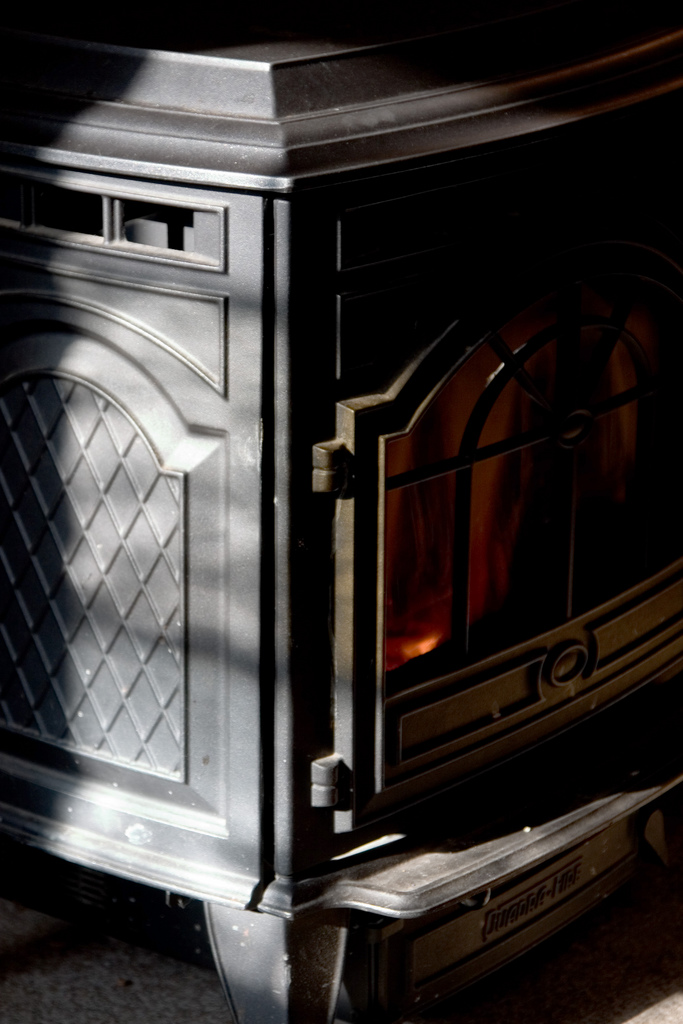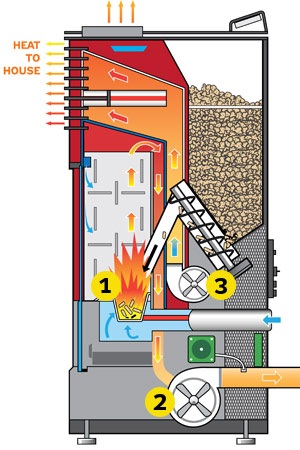Pellet Stoves Pt2
 Pellet Stoves Pt2 – Installation & Operation
Pellet Stoves Pt2 – Installation & Operation
Now that you’ve been introduced to pellet stoves in the first article of this 3-part series, we can now discuss installation & operation so you can get a generally understanding of how to care for your new pellet stove. Although similar in appearance to a wood-burning or gas stove, pellet stoves operate quite differently which means they need special installation considerations. Here are some things you should know about your pellet stove:
Installation
Pellet stoves run on electricity so a power outlet near that location that you want your stove installed is imperative. Not just any old outlet will do, though. Pellet stoves require a 110 volt AC electrical outlet to run, so you will need to make sure the room you wish to install the pellet stove has this type of outlet so you can safely run the unit.
Safe installation of a pellet stove requires more than just the proper electrical outlet. The space and venting options you choose will also affect the performance of the stove. When installing a pellet stove, keep the following things in mind:
- You should have a minimum of 5-7 foot of vertical pipe to venting your unit.
- If possible, vent your unit on the low-pressure side of your house, opposite of prevailing winds.
- You should only use flex pipe inside of a masonry fireplace.
- Use the same size pipe diameter for your entire exhaust system.
- Use a surge protector.
- Don’t plug your stove into a GFCI socket.
- If you install your pellet stove in a corner and venting it out a side wall, it’s imperative to always use a 4” diameter pipe regardless of your actual EVL.
Also, in order to protect your floor from the heat of the stove, you will need to place an appropriate floor pad underneath of your unit. Hearth pads & hearth boards can be found at most fireplace & stove stores and are essential for protecting your carpet, tile, or wood floors.
Since pellet stoves run on electricity, a power outage can disable your unit. Luckily, there are a number of manufacturers that make backup generators so you won’t be out of heat if your electricity goes out.
Operation of Your Pellet Stove
Pellet stoves operate differently than your typical fireplace unit. Here is a rundown of how your pellet unit produces heat.
1) Homeowners load pellets into the hopper, which can be located either on the top or bottom of the unit.
2) There is a motorized device called an auger that pushes the pellets off of the hopper into the burn pot. The speed of the auger affects the heat output and the faster the auger moves, the more heat will be produced by the stove.
3) Once the pellets reach the burn pot, it will ignite. The burn pot actually acts much like a carburetor by mixing air with the pellets to create combustion. Once burned, the ashes from the pellets are collected in the ash pot.
4) Unlike a tradition fireplace or wood burning stove, pellet stoves heat a room through convection. Convection is when hot air rises and forces cooler air to the bottom of the room. On each pellet stove unit, there is a convection blower that pulls in the cool air from the bottom of the room, runs it over the fire in the burn pot which makes the flames hotter. The heated air is then transferred into your home via the heat exchanger and room blower.
Many stoves are easily and conveniently controlled with a thermostat which makes controlling heat output a breeze.
If you have any questions about the operation or installation of a pellet stove, contact our stove experts! We have years of experience with installing and servicing pellet stoves and are here to ensure your installation process goes smoothly.
For your Fireplace, Stove, Patio or Chimney needs
please call one of our Sponsoring Businesses.
Chimney Specialists, Inc
869 Main Street, Highland, WI 53543
(608) 929-4887
Dubuque Fireplace & Patio
925 Century Drive, Dubuque, IA 52002
(563) 582-5156














